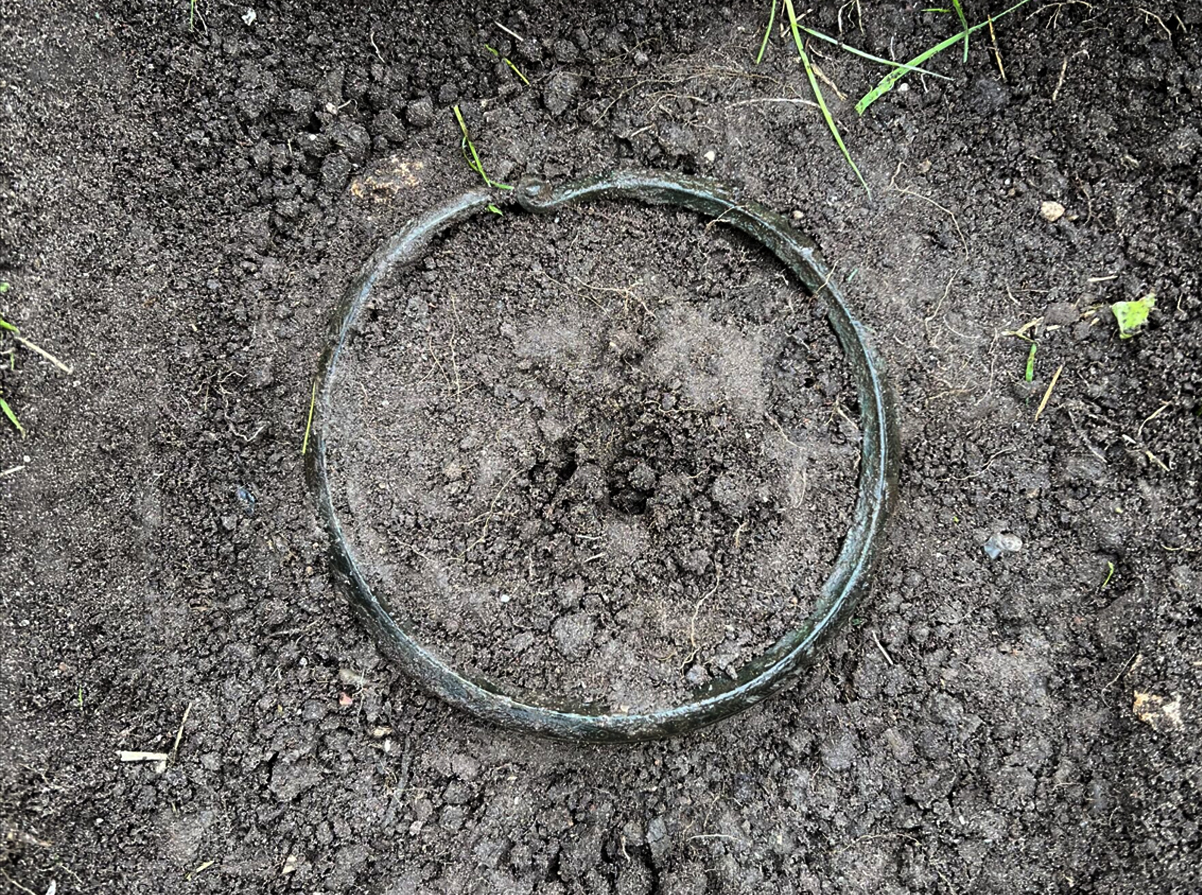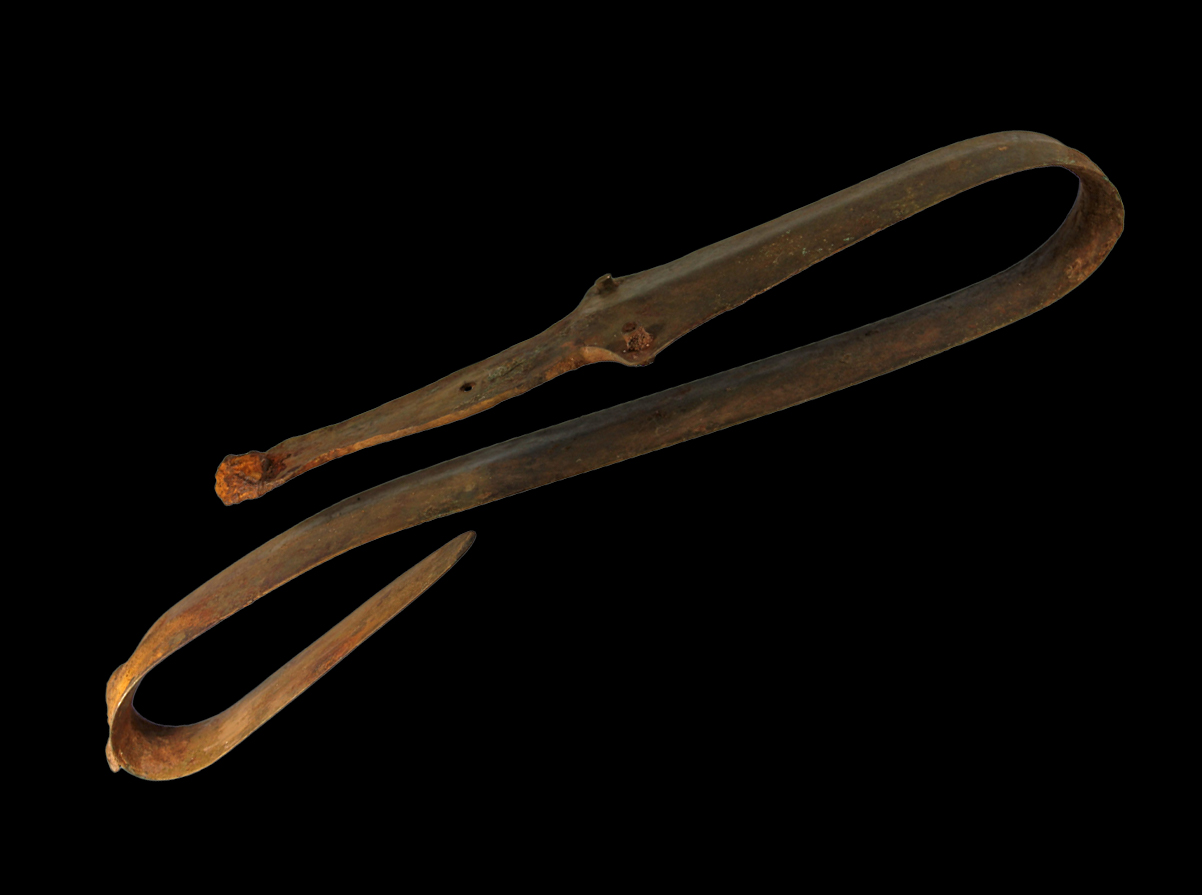A metal detectorist recently discovered a bent Bronze Age sword in the Værebro Ådal conservation area in Egedal Municipality, west of Copenhagen, Denmark.
The Værebro Ådal is a continuous river system that contains bogs and freshwater bodies, designated as a conservation area in 2013 by the Danmarks Naturfredningsforening, Roskilde Municipality, and Egedal Municipality.
The sword was found by amateur detectorist Claus Falsby, who uncovered a cache of several late Bronze Age and early Iron Age objects, deposited as a ritual offering in a bog near the small town of Veksø.
Mr Falsby immediately contacted ROMO, an organisation of museums that has cultural-historical responsibility for the Egedal Municipality.
According to ROMU archaeologist Emil Winther Struve, ritual deposits found in the region mainly date from the early to middle Bronze Age, however, a late Bronze Age deposit is incredibly rare, suggesting that the tradition was less practiced by this time.
Investigations of the deposit revealed two small bronze axes, three ankle rings, a fragment of a large pin, the bent sword, and a mysterious object yet to be identified.

Speaking on the discovery, the archaeologists suggest that the sword is a physical representation of the transition between the Bronze and Iron Ages, as the sword itself is made from bronze while the handle has iron rivets.
This indicates that the deposit dates from around 500 BC and was likely imported from an area north of the Alps, where the Hallstatt culture at the end of the Bronze Age became dominant in Europe.
Before the sword was sacrificed, it has been ritually bent to make it unusable as a weapon. Based on its materials and intricate design, this ensured it remained a valuable and significant offering.
A few days following the excavation by ROMU, Mr Falsby went back out with his metal detector and uncovered another significant Bronze Age object only 70 metres from the deposit, a large bronze necklace decorated with a fine herringbone pattern, the second only example found in Denmark.
Header Image Credit : Palle Østergaard Sørensen, ROMU
Sources : ROMU





